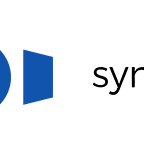How to Build MVP in 5 Steps
An MVP stands for a minimum viable product. It’s the only technology which that allows you to lunch a new product with core functions and also receive customer feedback. In this article, we discuss five easy steps of building an MVP. From the customer’s communication with MVP, the product can go through the various cycles of improvement that result in a fully-featured product.
What is MVP?
A minimum viable product (MVP) is a concept from Lean Start-up that stresses the impact of learning in new product development.
Eric Ries defined an MVP as that version of a new product that allows a team to collect the maximum amount of validated learning about customers with the least effort.
What Is the Purpose of the Mvp?
A company might choose to develop and release a minimum viable product because this is the product that the team wants to use:
• Release a result to the market as quickly as possible.
• Test an idea with real users before committing a large budget to the product’s full development.
• Learn what resonates with the company’s target market and what doesn’t.
What Are the Advantages of the Mvp?
1. A Better Understanding of Customer’s Needs
2. Development of Early Relationship with Customers
3. Clear User Interface
4. Flexibility and Constant Updates
5. Focus on Core Functionalities
So let’s get briefly to these points:
- A Better Understanding of Customer’s Needs: Feedback from the early adopters is much more useful than the best assumptions of the business analytical and experienced advisor. The earlier a client can test the product, the more effective the development you get. Only users can tell you which feature will be useful for them. If a user wants something new in their product then he/she can also tell that what feature they would like to get in their next release.
- Development of Early Relationship with Customers: Timing play a very important role in any organization or business. It helps you to engage the new users and stakeholders at a very early stage. The customer will give you priceless feedback on your product.
- Clear User Interface: With the help of the MVP approach, it prevents your initial product from getting cluttered with unwanted features. It helps to be easily adopted and not complicated in usage.
- Flexibility and Constant Updates: The MVP approach creates space for updates and new features that customers ask for. And your product can also benefit from the newer technology. It will help you to keep the product relevant in a competitive market.
- Focus on Core Functionalities: The MVP helps to find the transparency and well-defined core functionality of your product. It helps you to test your business concept with minimum cost and time.
Content originally published on Kirkland Premier Dentistry
